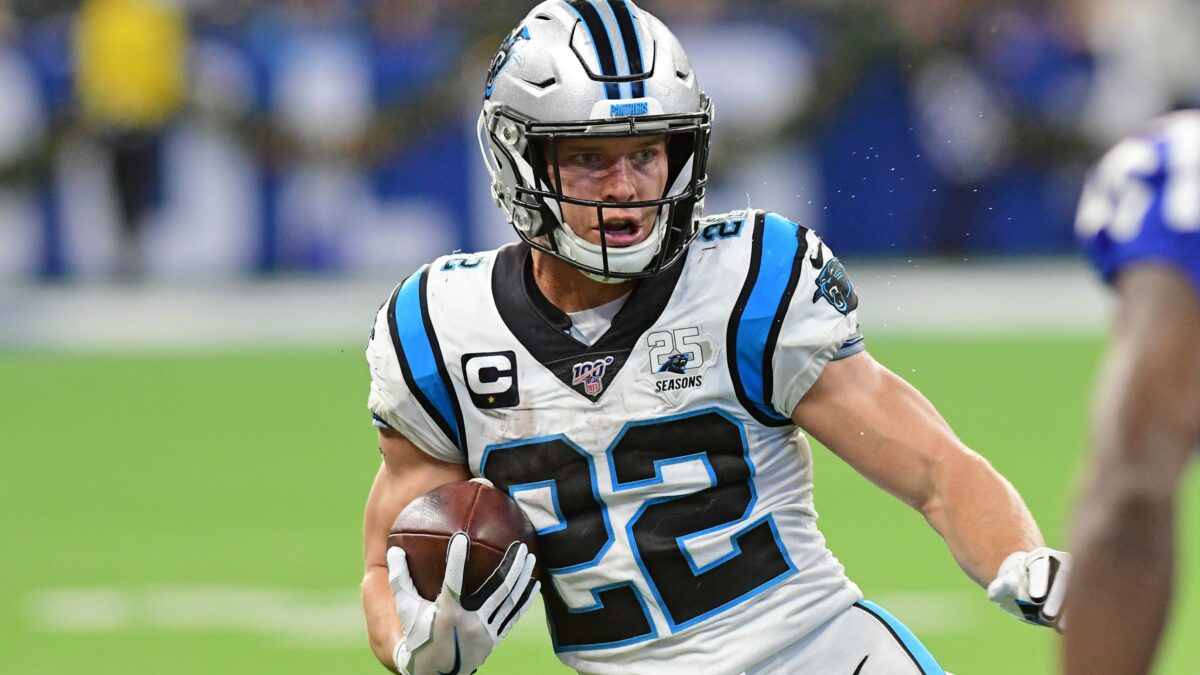A fantasy football auction is the most fun way to seed players onto fantasy teams. Hands down. And if you are new to bluffing and bidding, then congratulations. You can finally own any player that you want. It is true. You can own Christian McCaffrey, or Travis Kelce, or Davante Adams, or Patrick Mahomes. But you cannot have them all and need to carefully craft the optimal fantasy team.
And so enters the value of a budget.
You know what a budget is. It is that thing that your family finances rely on between Sunday and Thursday. It’s why they love you at work but cannot, um, actually prove it this fiscal year.
But how do you do that? How to determine player value? The reality is that a player’s value will change in every auction. It’s more about what you can pay for a position and fitting in the best players you can.
Let’s consider a 12-team league that uses 18-man rosters and a $200 salary cap with a minimum bid of $1. The starters are QB, 2 RB, 3 WR, TE, PK, and DEF. Standard performance scoring with one point per reception. Here are our assumptions:
- Quarterbacks score well, but with one starter, there is less “bang for the buck” by spending big on a top quarterback. A middle tier sort of player will be fine.
- Running backs are going to cost the most. They always do. This is also the position that gets injured the most, so depth is a very good thing.
- Wide receivers also score well in this format and there are three starters. It is also the deepest fantasy position.
- There are only three or four tight ends who demand high dollars, then maybe three more that have upside. And then there are just a lot of dollar players.
- Unless the scoring rules make either kickers or defenses unusually valuable, then paying up for them makes almost no sense given their year-to-year volatility and marginal fantasy points.
Before you create a budget, decide which of the three auction styles you want to use:
Go Big – This means buying two or three superstars. Like paying up for Jonathan Taylor, Dalvin Cook, and Davante Adams. And after paying maybe $150 for those three, you have to buy 15 more players for a total of $50. You better be good at finding value for $2 or $3 per player.
Go Wide – This is the most common and treats the auction as if it were a draft. You can array the player costs and it looks like what would result from a draft. One great player, several really good ones, some “have potential” players, and then a string of depth players.
Go Deep – A personal favorite, but not a comfortable style since it entails likely watching the first 30 or 40 highest-paid players get taken before winning a bid. The intent is to let everyone else burn up the big bucks on the top players and then being able to rule the middle of the auction when you have cash to spend on all the middle-tier players. This is like getting to build your team by using all fourth and fifth-round players. One problem – if anyone else also does this you just overpay in a bidding war.
Let’s create a sample budget for “Going Wide.” It is easy enough to move the values around to employ any of the three above styles.
- Decide on how much each position should cost overall.
- Take those amounts and spread to cover a starting lineup.
- Final version to spread out over all 18 positions
By using the budget, I know how much I can spend on any position. By no means is this more than a guideline. You’ll find plenty of reasons to throw a few more dollars into a position than budgeted, but you can easily decide where that money is deducted. Remember – depth is good, but that starting lineup should take up a major chunk of your money. Often the back half of an auction is mostly just players going at the $1 bidding minimum.
DO NOT HAVE MONEY LEFT OVER
Spend it all. You’ll pull up short on many players that end up going for just a dollar or two more. If you end up with unspent money, your roster could have been better. You just constantly adjust on the fly, spending more or less on the positions. When you target your RB2 for $40 but get the guy for $35, then another remaining position just found $5 more to be spent on.
The auction cheat sheets on the site are in percentages of the salary cap, so for a $200 cap just double the percentages to derive the dollar amounts. Compare the above budget against the cheat sheet values to see what team you could build. The values are derived from what position and player costs were from actual auctions.
Play around with the numbers on your budget and compare it to our auction cheat sheet or other actual auctions this summer. The Huddle’s annual Expert League Auction results can offer a feel for what to expect.
You are not the government or a teenager armed with a credit card. There is only a set amount of money to spend, so make it count!

